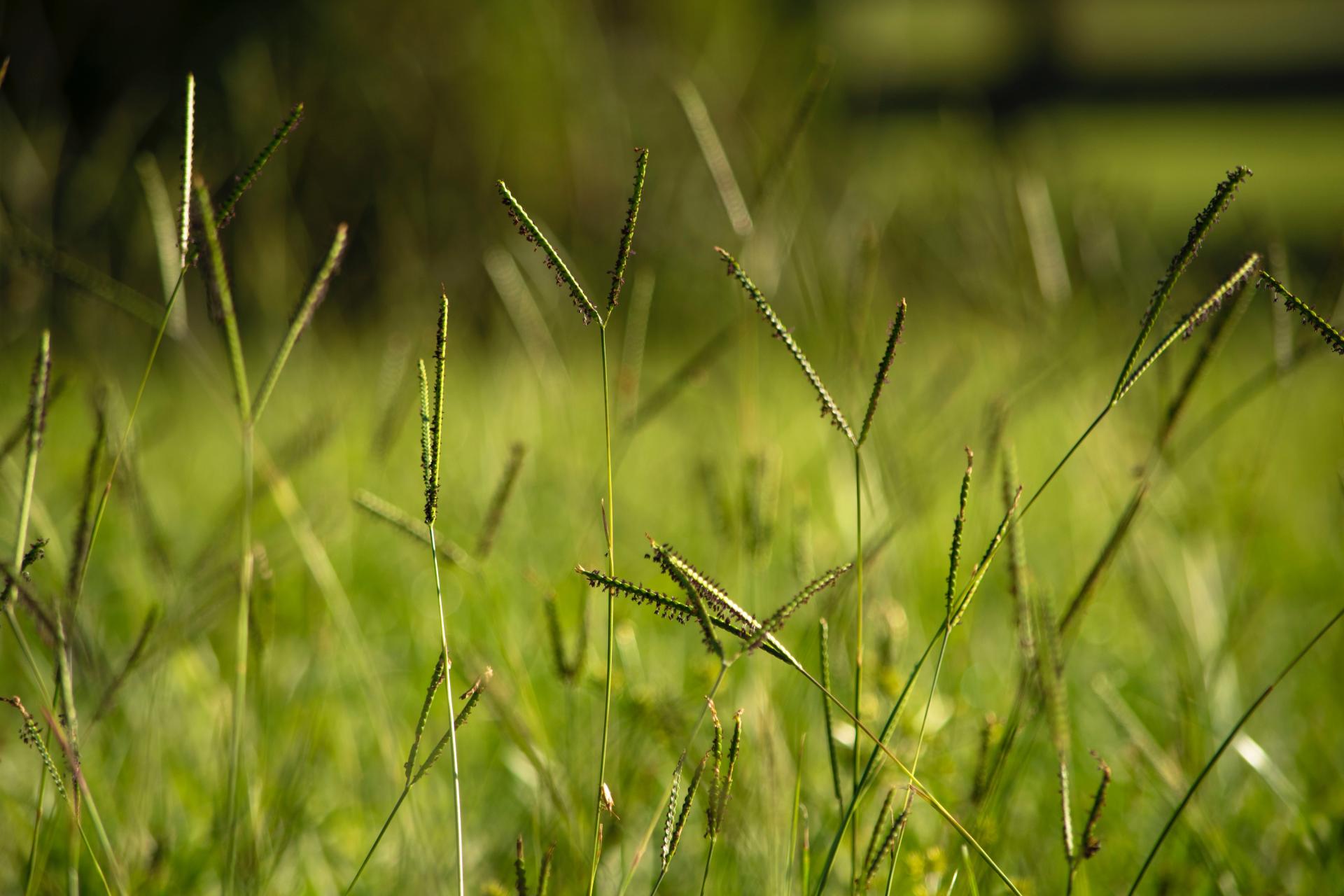You are here
Be a Better Gardener: Fall Lawn Seeding
Be a Better Gardener: Fall Lawn Seeding
by Thomas Christopher
Most of us have fallen into the habit of thinking of spring as the season for planting seeds, but in fact, grass seed does much better if planted at summer’s end into early fall. The cooler, commonly moist weather at that time of year is ideal for grass seed germination, and it is less conducive to the growth of lawn weeds, which commonly overwhelm spring seedings. This makes the end of August through September an ideal time to renovate your lawn.
There can be several reasons why you may want to bolster your lawn with new seed. Bare patches may have opened up in the lawn during its summer dormant season. Or neglect may have thinned the lawn, making it more prone to weed invasion. Thickening the turf with an application of grass seed at this time of year will also help to protect against weeds. Even if your lawn is already infested with crabgrass and other annual weeds, research by Cornell University has proven that a series of over seedings can be an effective, chemical-free treatment for cleansing the turf.
Patching a bare spot is a straightforward process. Remove any dead vegetation from the spot and scratch up the surface soil with a garden rake, a type of rake with a stiff head and sturdy iron or steel teeth. Choose a type of grass seed suited to your climate, soil, and the exposure of the spot to sunlight: I have become a fan of turf-type tall fescue grasses, as they produce a deep-rooted, drought- and traffic resistant lawn with much less need for fertilizer. If you select turf-type tall fescue seed that has been inoculated with endophytes (a type of beneficial fungus) the result will be an especially hardy and vigorous grass with a natural resistance to leaf-eating insects such as chinchbugs and sod webworms. Turf-type tall fescues are also more tolerant of shade than Kentucky bluegrass. For the best results, mix the tall fescue seed with seeds of perennial ryegrass. The perennial rye seeds are especially fast germinating and so establish a quick cover that serves as a living mulch while the turf-type tall fescue gets started.
Sprinkle the seed evenly over the bare soil and mix it into the surface soil with a pass of a leaf rake, then cover it with a light sprinkling of weed-free compost or straw. Keep the soil moist until the seeds have all germinated (this may take three weeks for the turf-type tall fescue). Just a light sprinkling of the surface is all that is needed, but you may have to do this twice a day during dry, sunny weather.
Experiments by Cornell University proved that a series of more general re-seedings beginning in August can effectively renovate a lawn overrun with crabgrass or other annual weeds without the use of herbicides. Use a rotary or drop spreader to spread perennial ryegrass or turf-type tall fescue seed over the existing turf in mid-August. You should apply the ryegrass seed at a rate of 3 pounds per 1,000 square feet and the tall fescue seed at a rate of 3 pounds per 1,000 square feet. Repeat this treat at two-to-three-week intervals for a total of four seedings in a fall with normal rainfall; researchers found that during a droughty fall a couple more seedings were needed.
There’s no need to rake or disturb the soil after applying the seed. That, in fact, will bring more weed seeds to the surface. By mid-fall, you should see grass seedling poking up through the existing vegetation. The new grass will establish itself by the middle of the following spring, creating a dense cover that will inhibit the emergence of a new crop of annual weeds. In their treatment of plots in an expanse of turf heavily infested with crabgrass, the researchers found that this treatment resulted in 95% coverage with grass when perennial rye was used for the reseeding and 85% with turf-type tall fescue. It should be noted that the series of re-seedings had no effect on the persistence of perennial weeds such as dandelions. Environmentally conscious homeowners can reduce them, if they deem that necessary, with spot sprays of iron HEDTA, a soluble form of iron that is harmless to wildlife when applied as directed, and safe for pets and people as soon as the spray dries. (Brand names include “Fiesta,” “Iron X!,” and “Captain Jack’s Lawnweed Brew.”)
Be-a-Better-Gardener is a community service of Berkshire Botanical Garden, located in Stockbridge, Mass. Its mission, to provide knowledge of gardening and the environment through a diverse range of classes and programs, informs and inspires thousands of students and visitors each year. Thomas Christopher is a volunteer at Berkshire Botanical Garden and is the author or co-author of more than a dozen books, including Nature into Art and The Gardens of Wave Hill (Timber Press, 2019). He is the 2021 Garden Club of America's National Medalist for Literature, a distinction reserved to recognize those who have left a profound and lasting impact on issues that are most important to the GCA. Christopher’s companion broadcast to this column, Growing Greener, streams on WESUFM.org, Pacifica Radio and NPR and is available at berkshirebotanical.org/growinggreener.
Help Our Garden Grow!
Your donation helps us to educate and inspire visitors of all ages on the art and science of gardening and the preservation of our environment.
All donations are 100 percent tax deductible.


